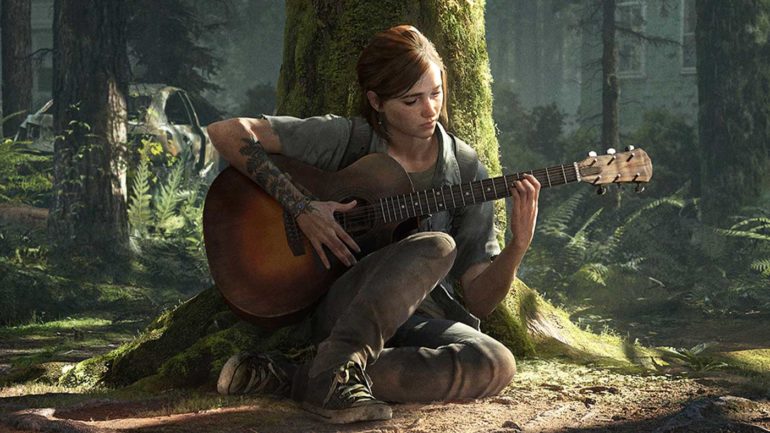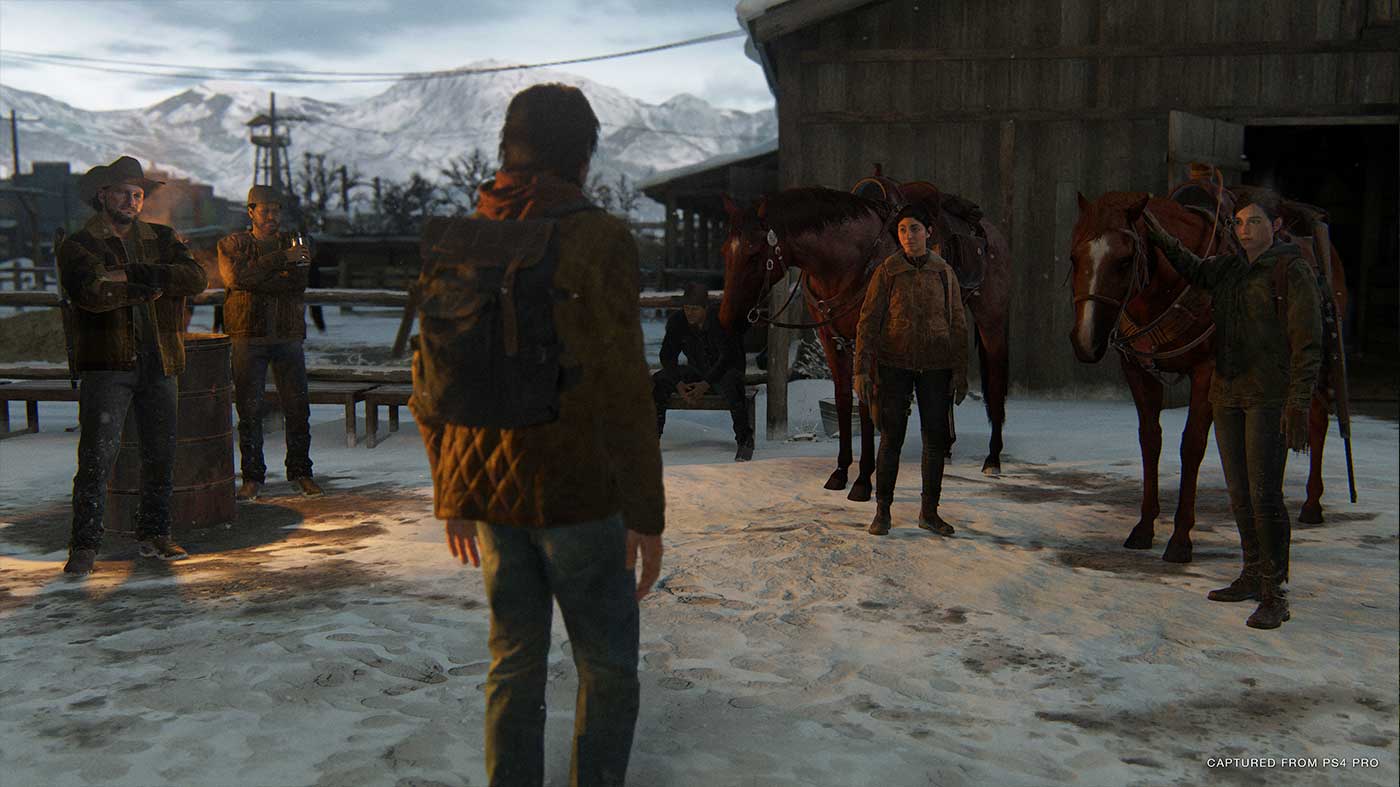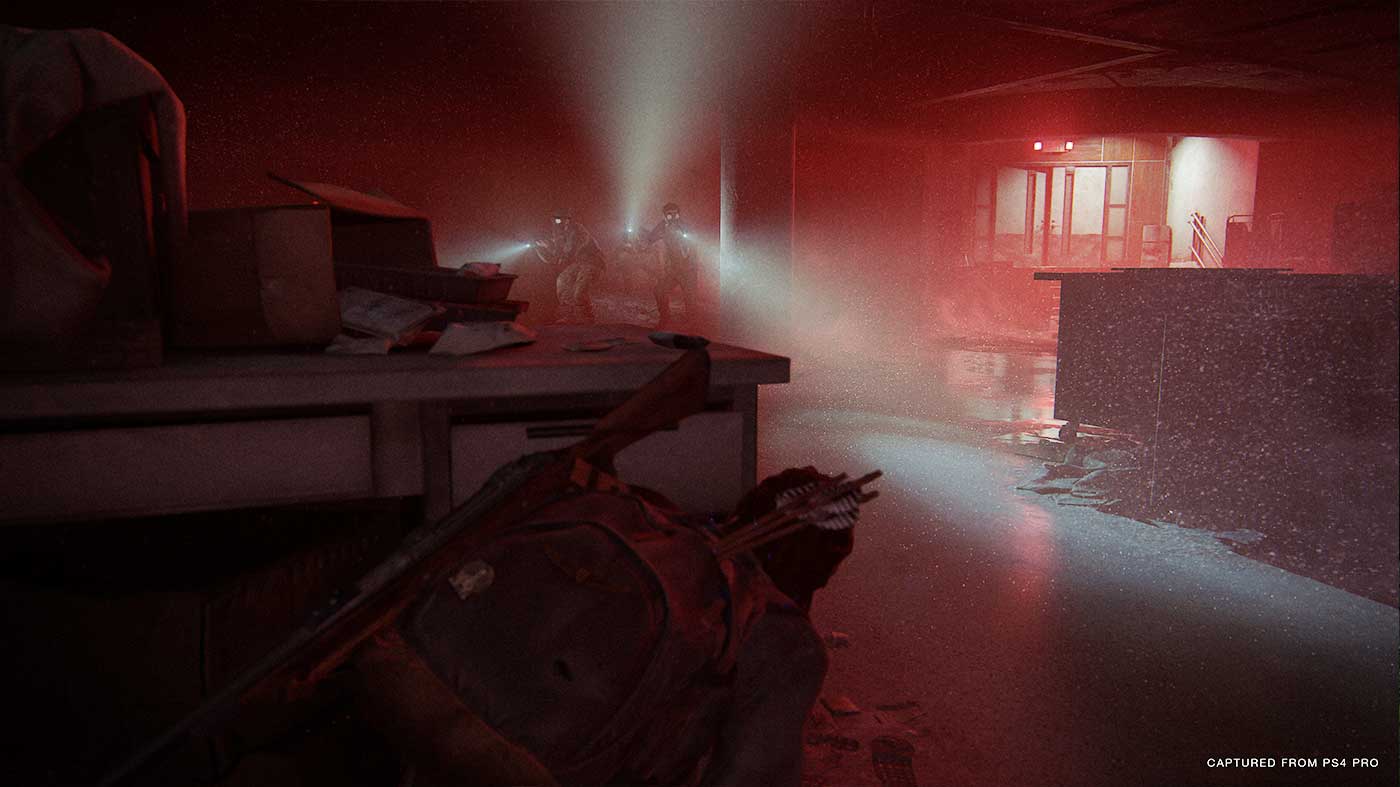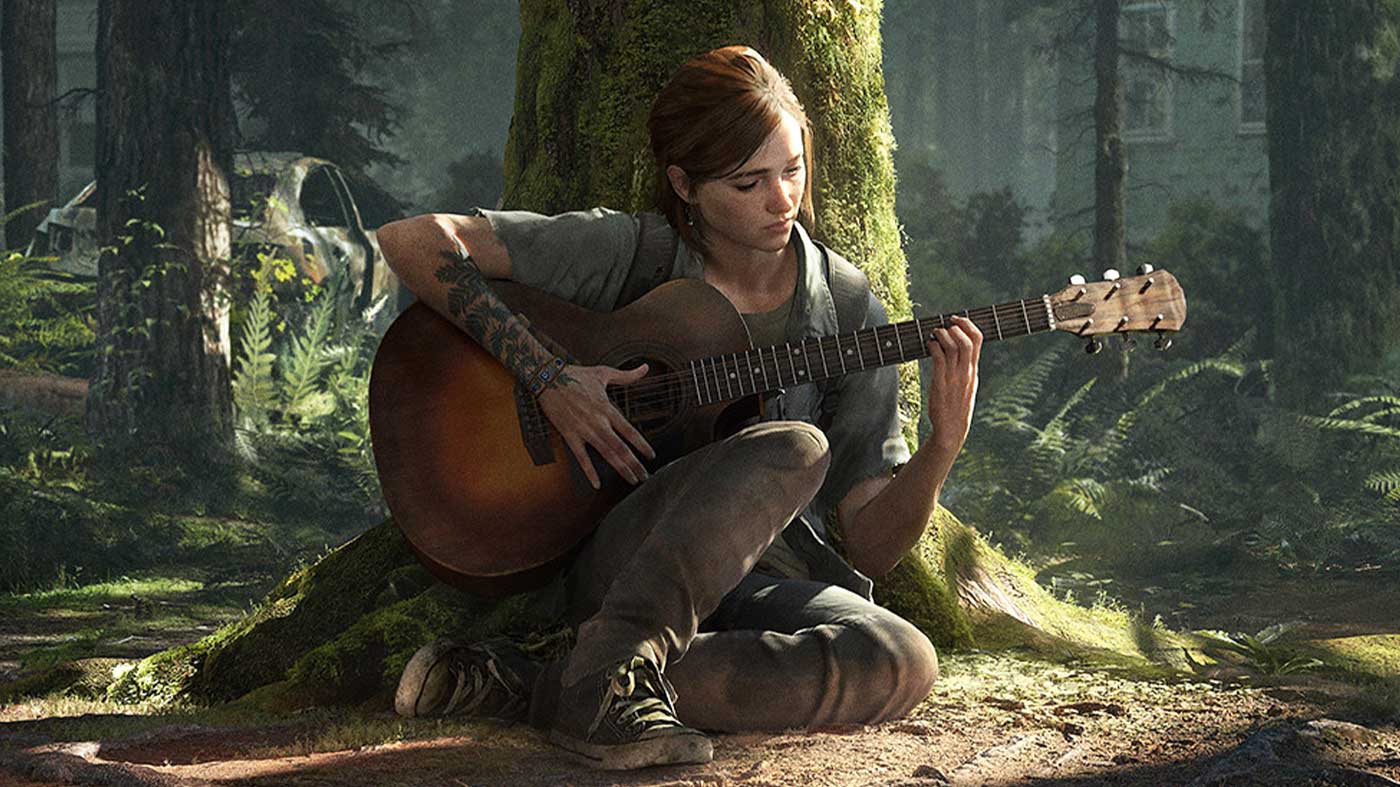The Last of Us introduced us to an America at the precipice, all through the lens of Joel and Ellie. A smuggler and his burdensome task. It did a lot of tremendous things in establishing the world, its characters and explored mature themes, and though it circumvents the ludonarrative dissonance that infects Nate Drake’s treasure hunts by establishing a precondition for violence, the necessary act of killing often impeded Naughty Dog’s clear storytelling might. The Last of Us Part II doesn’t suffer the same fate, emerging as a spectacular sequel that boasts a far darker world, bankrupt of morals and one at the mercy of cause and effect.
It’s easy to empathise with the cause of Joel’s St. Mary’s Hospital massacre that punctuated the last act of The Last of Us, even if the effect paints him as a tragic villain whose actions put in motion a procession of violence that permeates Part II. “They have sown the wind, and they shall reap the whirlwind.” Though the presence of incredibly strong women isn’t a surprise for Part II, the game pivots, subverts expectations, and uncouples itself from the conventional. It’s a brave, bold direction for Naughty Dog to take and I questioned halfway through how they could possibly execute on the idea.
It isn’t without a heap of tremendous set pieces, some of which are “Children of Men’s tracking shot” good, the second half of the game does drag at one or two points, even going so far as to threaten wearing its welcome out. Part II offers up what felt like more endings than Return of the King, stepping past a couple of natural resting points. Not content on half-finishing their story and leaving the door ajar for an easy sequel, Part II tells a full story. That being said, the game’s some-twenty-five hour arc remains an absolute industry standard in just about every aspect of the developmental craft.
Though it has been billed as a revenge tale from promo one, there’s a lot of sub-plots and digressions Part II makes to flesh out what’s left of Seattle, a now skeletal civilisation whose bones have been picked clean by the ethically regressed. I wouldn’t dare speak of Abby’s motivations, or her place in The Last of Us’s universe, but she and Ellie exist as two sides of the same coin and it’s a shame a few out of context scenes have tarred her as something she isn’t. Though it’ll still be the basis of plenty of noise from the fanbase, Naughty Dog’s willingness to let her exist, through a workhorse performance from Laura Bailey, as a foil to Ellie and a monument to causality is undoubtedly bold.
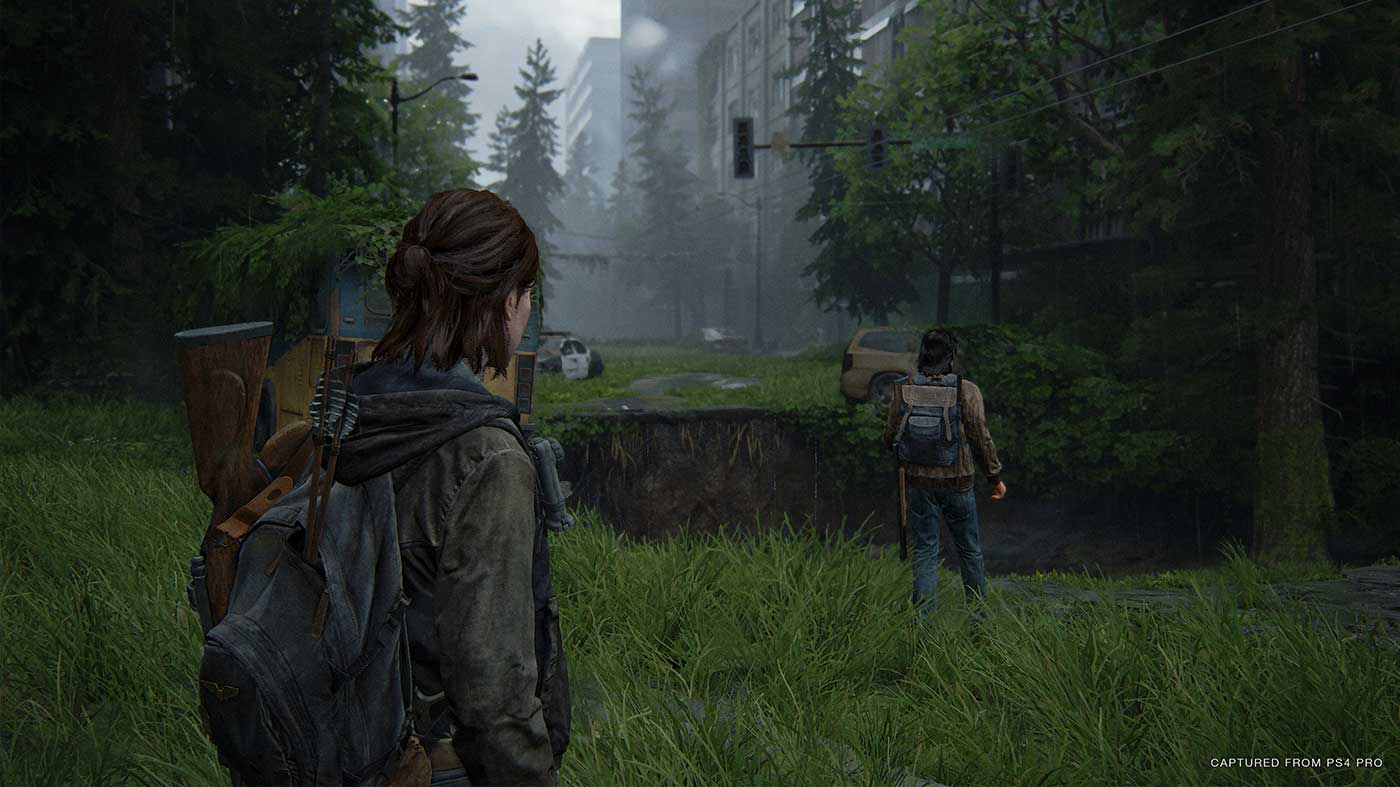
The original game, despite tremendous storytelling and performances from Troy Baker and Ashley Johnson, felt like a slog to the bitter end. This wasn’t the case for everybody, I know, but the fact I’d let out a mournful sigh each time I’d enter a tough encounter that I knew was gatekeeping the next cutscene speaks to my experience and how I felt the game’s plot constantly tripped over its gameplay. Naughty Dog’s Seattle is a different kind of monster and Ellie has clearly learned a few new tricks, I’m glad to say I never found myself despairing over a fight in Part II. In fact, I unearthed the sense of satisfaction that comes with killing infected and the Wolves knocking at Ellie’s door. The game’s A.I. isn’t perfect, there has been the odd occasion where an enemy will be blind to my presence despite stepping on their toes, the combat intelligence from enemies is astounding and forces a terrible weight on the gunplay, you celebrate every devastating headshot while a bullet wasted sees your heart rate climb as they flank and catch you unaware.
Most infected take a more direct route, shambling toward you while absorbing more resources than those still human. Though simple, the game’s hand-to-hand remains visceral and confronting at the best of times. Almost like fencing, Ellie gets her licks in while dodging their one-note attacks that have grown predictable to her now.
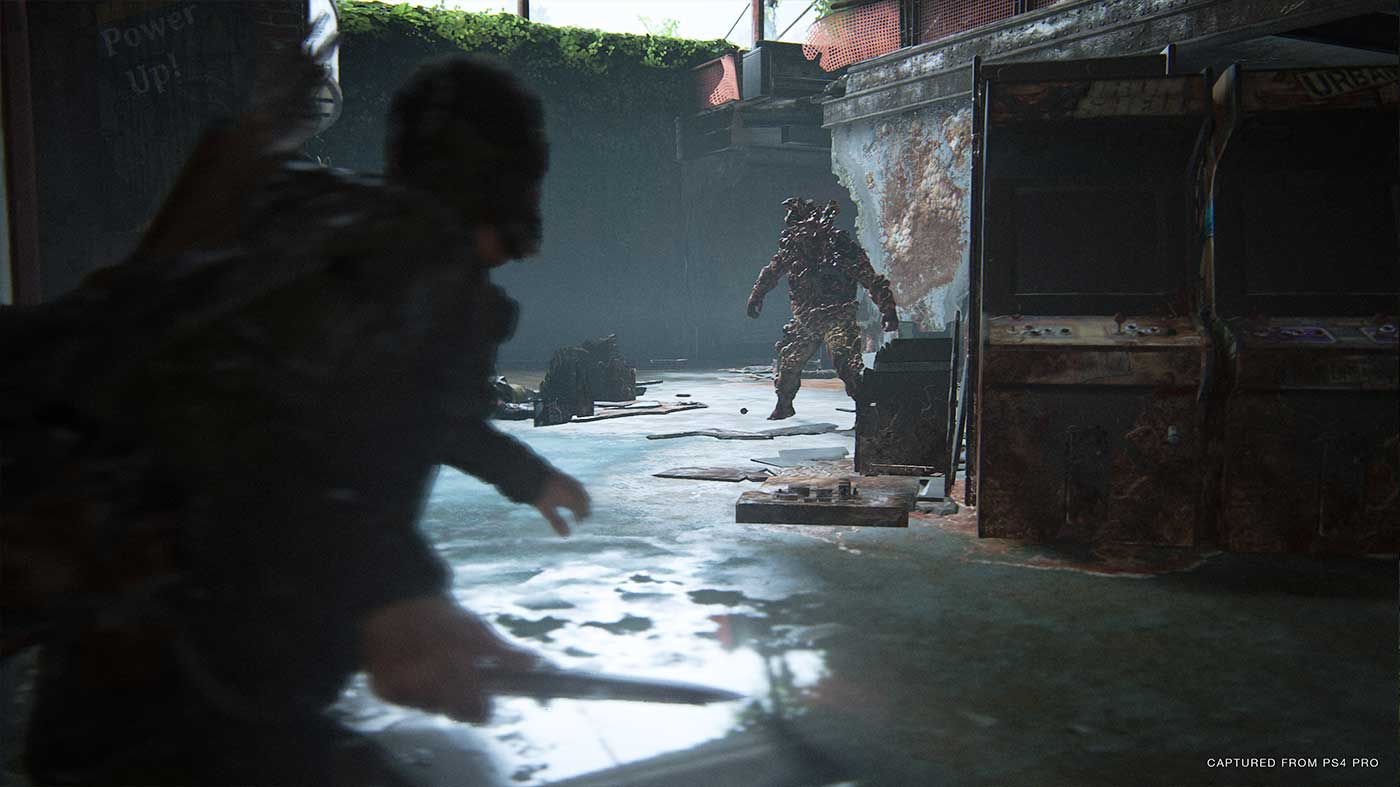
Outside of combat, Naughty Dog places a great emphasis on exploration and solving some lighter puzzles to uncover a lot of the world-building that has been built-in. There’s a purpose to all of it and it’s easy to miss that. There’ll be characters you’ll only meet and learn about through old notes, and though their arcs are small, they regularly conclude and meet a mechanical need the game has. The open-world portions of Part II are fleeting, the fact there’s cause for the searching shows great care. With Ellie having learned to swim, there’s no need to float a pellet through the water to navigate the disappointing environmental puzzles that arose in the original game. Though their mastery of challenging players with the environment has improved through the use of ropes and the faithful dumpster, I’m most taken aback by each little deft clue that will lead Ellie to a nearby safe while detailing the backstory of why it’s even there, and which anniversary date or winning lotto numbers you’ll need for the combination.
In safes much like these, Ellie will discover training manuals, which return as a collectible from The Last of Us and help her unlock a dormant branch of her skill tree for players to pour supplements into. Unlike Joel’s experience, which saw him collect training manuals to unlock better, tiered upgrades, Ellie’s manuals grant access to previously locked portions of her skill tree, of which there’s five in total. It feels more streamlined and offers some agency over the Ellie you’re playing as. How you go about crafting and upgrading weapons remains largely unchanged, though the latter has been modernised so that you’re placing resources in once-off, tangible buffs such as a greater fire rate or a scope for the rifle. A menu is still present of course, but seeing Ellie, in real-time, efficiently dismantle and reassemble her guns after seeing her fire a gun for the first time speaks to who she’s become in this world.
Just when I’d thought God of War might have bled this console dry, it goes on to output a bigger, longer, higher fidelity experience like Part II. There’s a reason that this team is one of the industry leaders in animation and environments, both internal and external, that look photorealistic. I often caught myself looking out over the valleys of Jackson, in constant awe at every detail. This game isn’t just a beautiful ration of visual delight, it’s an all you can eat buffet. Gustavo Santaolalla’s score is another devastating composition that captures the game’s profound sadness and the unconditional hate that drives much of the experience. It was especially nice to have a particular, haunting narrative motif structured around “Future Days”, a song from Seattle’s own Pearl Jam. If nothing else, it reminds us that art can still endure and break through the gloom.
Though I’m quick to wax lyrical about the talents of Troy Baker and Ashley Johnson, their performances in Part II are now two parts in something larger, an incredible and diverse ensemble cast, full of representation, who bring this world to life. It’s clear the world in The Last of Us is overbearingly brutal and violence is its language, but it’s reassuring that there are at least whispers of sensitivity that go along with it as it passes the microphone to those so often stuck in the margins of pop-culture.
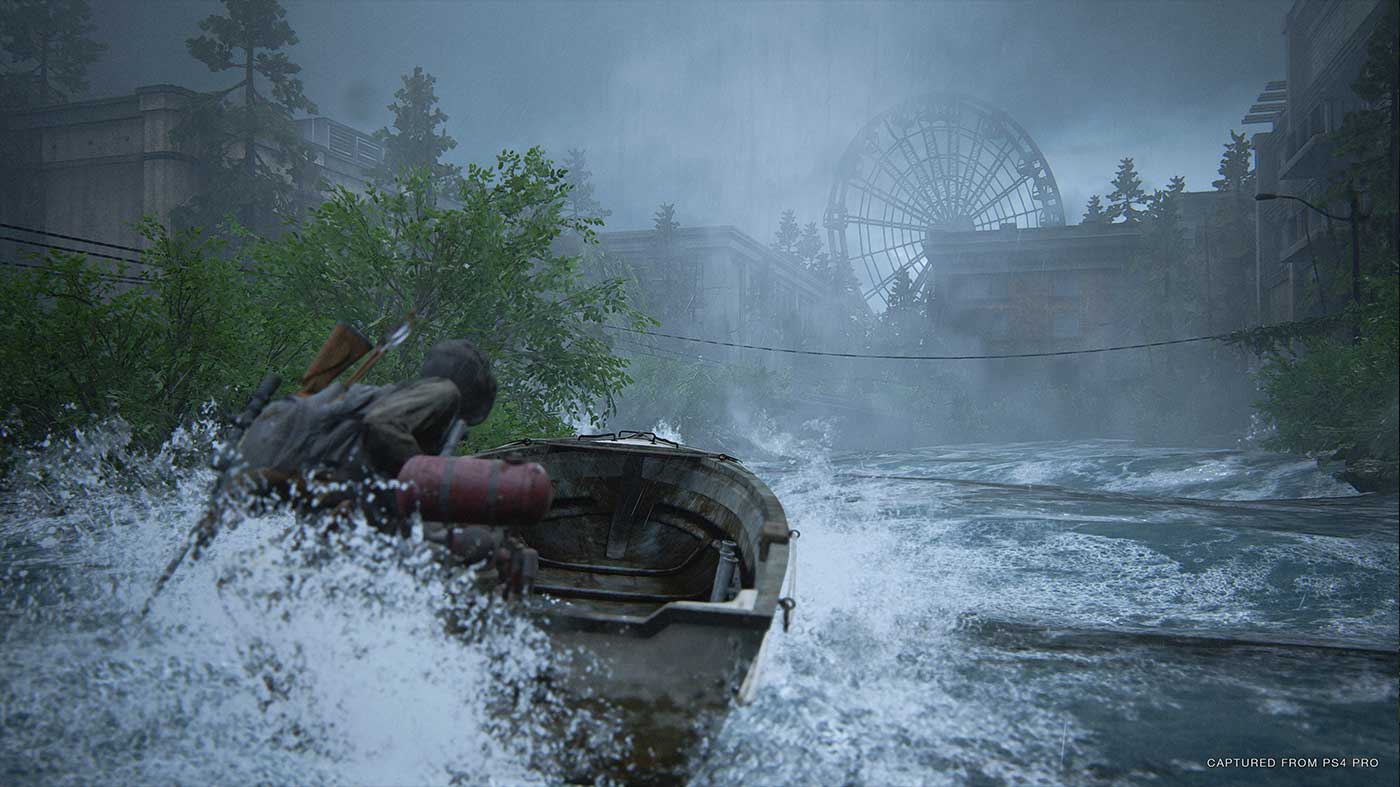
Of course, the loss of the Factions multiplayer mode is a big shame and though it’s expected to be coming standalone at a later date, it still hurts the overall package for those unsure about plunging into another story-driven, single-player title. But remember, this is a game that’s over twenty hours long and maintains an enormous standard throughout every second. You’ll be hard-pressed to find a game that lasts as long as it does while looking and playing so well, especially when you consider that Naughty Dog continues to introduce new gameplay elements up until the credits roll. It’s also one of those rare, spectacular sequels I found myself returning to once I’d finished, to find the last few trading cards and coins and relive those big, impactful story beats that Naughty Dog has built their name upon.


